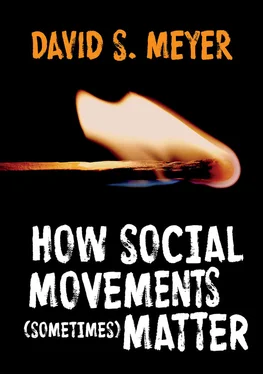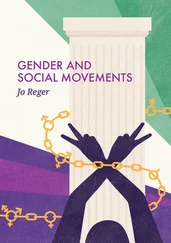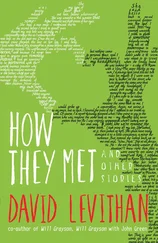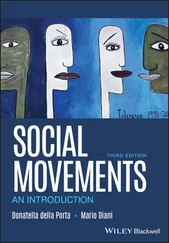Like any overnight sensation, the sudden emergence of a social movement marks a long period of less immediately successful attempts to effect change and to reach a public. In authoritarian polities, those efforts might be secret, played out around kitchen tables and around the edges of work, with a samizdat literature circulation used to spread information. In democratic states, efforts to change the world can be extremely public, reflected by activists handing out leaflets, then making phone calls, and later, posting information on websites. When circumstances allow, that small core will extend to reach broader constituencies, convincing new people that organizing and taking positions is necessary and/or potentially effective.
Through literature, conversation, and through other events and products, organizers develop ideas. The work develops not only the ideas, but also commitment to them. People trying to recruit others to the cause use ideas, slogans, and symbols to do so (Rochon 1998). Even as ideas or demands expand, the depth of commitment or understanding needed to join in diminishes. Short-hand descriptions stand in for elaborated understanding.
The growth in support feeds the growth in support, creating a kind of bandwagon effect (Oliver et al. 1985). The presence of greater numbers of people engaged on the same set of issues serves to draw attention to both the issues and the activities of movement organizers. Visibility legitimates their efforts and their issues. More organization and more people mean more events, and more opportunities for potential supporters to join in, and make it far more likely that a prospective activist will already know people who are engaged. The movement seems to be more urgent, demonstrate a greater chance of making a difference, and thus more attractive to engage. It’s easy to walk past a single leafletter on the streets, and hard to imagine that this effort will make a difference. As the crowds grow, and as they generate attention, they are harder to ignore and easier to join. Bystanders join in as risks diminish, and as movements can offer more incentives for others to join. Importantly, one does not have to sign on to all elements of a movement’s campaign in order to join, particularly as it grows. Indeed, life within a social movement provides a basis for transmitting values and beliefs (Munson 2009).
The growth of a movement also feeds the supply of resources available to it. More people can do more. More money allows hiring full-time organizers, opening additional offices or outposts, producing more media, and creating more events. All of this aids visibility, aiding recruitment, and driving legitimacy. And the larger a movement becomes, the more imperative it becomes for authorities to respond, and the more visible those responses are. Growth makes subsequent growth easier.
As a movement grows, of course, diversity within it increases. Although successful campaigns may be able to coalesce around a central demand, the contours of their claims and the nature of their ultimate goals are going to be increasingly contested. As more diverse factions join, they come with different ultimate goals and different sets of commitments to ultimate aims. Importantly, people are more likely to sign on to a movement as a vehicle for sending a message, when that movement appears capable of conveying a message. Others, who may start with no commitment to the cause, may sign on simply because the movement appears as the strongest expression of any kind of political alternative.
Authorities’ responses become increasingly critical to a movement’s future. When a campaign succeeds, those in authority are forced to answer questions about it, and about the issues activists press. Institutional political opponents of the government will adopt the concerns of a movement for their own purposes, and mainstream journalists will continually demand that government officials explain what they’re doing. Even when authorities justify the policies activists protest, the role of social movements in setting the agenda for institutional politics is the place where influence can take place.
Authorities respond to both the actions and the ideas of social movements. Those responses matter, and they are not necessarily seamlessly connected.
In response to the actions of activists, authorities typically draw lines that separate permissible or accepted modes of dissent from those that they will not tolerate. In liberal democracies, governments give most causes ready access to the tools of protest. Democracies allow participation in all sorts of other ways as well. Organizations can develop permanent and visible offices, raise money, contribute to campaigns, and lobby elected officials. Demonstrations, marches, and rallies have become routine for all concerned in liberal democratic polities. Organizers generally negotiate with authorities before an event on parade routes, likely crowd sizes, and the amount of sound produced, and the number of portable bathroom facilities needed. Police monitor the boundaries of the demonstration, often keeping distance between protesters and their opponents, and arresting people who would violate whatever the negotiated protocol might be. Even civil disobedience can be managed through elaborately choreographed, ritualized performances, in which the time, place, and manner of arrests can be negotiated in advance (Earl et al. 2003).
Liberal democracies generally claim to allow a broad spectrum of protest tactics, regardless of the causes they are meant to advance. But governments don’t always live up to the content-free ideal. European democracies sometimes ban the symbols and rhetoric or Nazism, or other hate speech. In the United States, the protest actions of groups with radical ideas – on the left and right – are policed more aggressively, and with far less tolerance. State authorities manage policing differentially, targeting protesters they view as the most threatening with particularly harsh treatment. But the level of threat is assessed not only by a protest campaign’s tactics, but also its claims and its constituencies. Violence and arrests are also more likely when the protesters represent minority groups (Davenport 2007; Davenport et al. 2011; Reynolds-Stenson 2017).
Authorities also make decisions about how to respond to the ideas expressed by social movement activists. In any polity, there is a spectrum of legitimate discourse and policy proposals, although that spectrum can shift over time. Authorities are generally not compelled to respond seriously to claims that fall outside that spectrum. Thus, the British parliament would not have to respond to the calls for ending the National Health Service, and – until relatively recently – American leaders haven’t had to respond to claims to create an American version of that service.
Social movements set an agenda for discussion, but institutional political figures choose which elements of that agenda to respond to and with how much seriousness. Political leaders can embrace aspects of a movement’s claims, redefining them in the process, or reject them outright. Their responses provoke challenges within a social movement coalition, as factions that win acceptance have to calculate whether it’s worthwhile to ditch their social movement connections to try to enhance their access to people with power (Amenta 1998; Amenta et al. 1994).
Harsh state responses to protest in the streets can crush the public expression of social movement ideas. Thus, in 1989, when democracy demonstrators filled Tiananmen Square in Beijing, everyone carefully watched the response of the state and of the police. The national government, run by the Chinese Communist Party, had supported policies of economic liberalization without concomitant political openings. In response to the death of former leader, Hu Yaobang, young activists filled the square to mourn, and to support policies that promoted democracy and freedom, which they said reflected Hu’s ideals. Protesters moved in and out of the public square over weeks, receiving mixed signals from authorities about how their protests were being received. In May, a group of students commenced a hunger strike, which generated both international and national attention. When the protests began to spread across China, authorities cracked down harshly, mobilizing hundreds of thousands of troops, including mobilized military units based in the countryside, and aggressively dispersed the crowd, leading to hundreds of deaths, and dramatic pictures of unarmed activists standing up to military tanks (Zhao 2001).
Читать дальше












